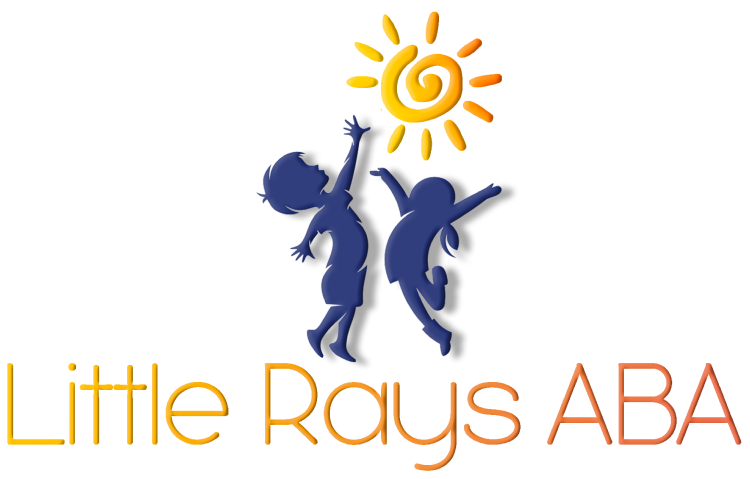Understanding Comorbidities in Autism and How They Affect Daily Life
When we think about autism, we often focus on communication, social challenges, and repetitive behaviors. But what’s often overlooked are the other conditions that tend to show up alongside it—what we call comorbidities in autism.
In my experience as an ABA therapist, I’ve worked with a young boy who wasn’t just navigating autism—he also had severe anxiety and trouble sleeping. His parents thought his tantrums were “just part of the autism,” but once we uncovered the anxiety piece, everything changed. His world—and theirs—began to make more sense.
Understanding Autism Comorbidities
What are Comorbidities in Autism?
One of the most important things I emphasize to families is understanding the full picture of a child's needs. That includes recognizing comorbidities—additional medical or psychological conditions that exist alongside Autism Spectrum Disorder (ASD).
It's more common than you might think. Many individuals with autism also experience one or more co-occurring conditions. These can include mental health issues, developmental disorders, and even physical health problems. When we overlook these conditions, we risk missing crucial pieces of the puzzle that impact daily life, learning, and emotional well-being.
Research continues to show that a large percentage of individuals with autism also face these added challenges. That’s why understanding comorbidities is essential—not only for accurate diagnosis but also for crafting meaningful, supportive treatment plans.
Why Identifying Comorbid Conditions Matters
When I work with families, I always stress the value of a thorough evaluation. Identifying comorbid conditions helps us better understand the whole person, not just their autism diagnosis.
Let’s say a child is displaying high levels of distress in social situations. Is it autism-related social anxiety, or could it be a separate anxiety disorder? Without identifying comorbidities, behaviors can be misinterpreted, leading to treatments that don’t fully meet the individual's needs.
When we recognize and treat co-occurring conditions early, we’re not just improving behavior—we’re enhancing the person’s overall quality of life. And that’s the ultimate goal.
Common Comorbidities with Autism
Understanding common autism comorbidities helps us create more effective, individualized support strategies. Here are some of the conditions I often see coexisting with ASD.
Anxiety Disorders
Anxiety disorders are among the most frequent comorbidities I encounter in individuals with autism. Whether it’s worrying about social situations, transitions, or unexpected changes in routine, anxiety can be a significant barrier to success and comfort.
I’ve seen anxiety show up in many ways—physical symptoms like headaches or stomachaches, irritability, and even withdrawal. Common anxiety-related diagnoses in the autism community include:
- Generalized Anxiety Disorder (GAD)
- Social Anxiety Disorder
- Specific Phobias
Helping families identify signs of anxiety can make a major difference in day-to-day functioning and emotional well-being.
Attention Deficit Hyperactivity Disorder (ADHD)
ADHD is another highly common comorbidity I see in my practice. In fact, individuals with autism are more likely to also be diagnosed with ADHD than the general population.
The symptoms—inattention, impulsivity, and hyperactivity—can make things more complicated, both at home and in school settings. It’s essential to distinguish between behaviors related to autism and those stemming from ADHD, so that both can be addressed effectively through the right interventions.
Sensory Processing Disorder (SPD)
Most of the families I work with are familiar with sensory sensitivities, but not everyone realizes that these may indicate Sensory Processing Disorder (SPD).
Some children are hypersensitive to sound or light; others crave deep pressure or constant movement. When these needs go unmet, it can lead to meltdowns or withdrawal. Supporting children with SPD requires a deep understanding of their sensory profile, and often involves collaboration with occupational therapists.
The overlap between autism and SPD is significant, which is why we build sensory-friendly strategies directly into therapy plans.
Exploring Additional Comorbidities
Beyond the more commonly discussed conditions, there are several additional comorbidities with autism that deserve attention. These medical issues can have a major impact on quality of life and often go unnoticed in early evaluations.
Epilepsy
It’s been shown that epilepsy is more common in individuals with autism, with estimates suggesting that between 20% and 30% may experience seizures at some point in their lives.
Seizures can take many forms—from generalized tonic-clonic seizures to focal seizures—so it’s important to work closely with a neurologist for accurate diagnosis and treatment. I always advise parents to watch for subtle signs and report them to their child’s healthcare provider.
Management typically involves anticonvulsant medications and regular monitoring, which can help reduce the risk of complications.
Gastrointestinal Issues
Gastrointestinal (GI) problems are something I hear about regularly from parents. Many children with autism struggle with chronic issues like constipation, diarrhea, or stomach pain. In fact, research suggests that as many as 70% of autistic children experience GI symptoms.
These discomforts can affect mood, sleep, and even behavior. I’ve seen kids become more irritable or withdrawn simply because their tummy hurts. Dietary changes, food sensitivity testing, and working with a GI specialist can go a long way toward improving comfort and reducing behavior challenges.
Sleep Disorders
Sleep issues are another major concern. Somewhere between 40% and 80% of autistic individuals deal with sleep disorders—whether that’s trouble falling asleep, staying asleep, or waking too early.
Common types of sleep disruptions include:
- Insomnia
- Sleep apnea
- Restless legs syndrome
A consistent bedtime routine, a calming sleep environment, and reducing screen time before bed can all help. When needed, I recommend families consult with a sleep specialist to explore additional solutions. Better sleep often leads to better behavior, focus, and emotional regulation.
How Comorbidities Impact Individuals with Autism
Comorbid conditions can significantly influence how autism presents—and how we approach care.
Challenges in Diagnosis
One of the biggest challenges is that symptoms of comorbid conditions can overlap with or even mask those of autism. For example, a child’s social avoidance might be seen as a core autism trait, when in reality, anxiety is driving the behavior.
That’s why I always recommend comprehensive assessments that go beyond just screening for autism. If comorbidities are missed, treatment plans might fall short, causing frustration for families and clinicians alike.
Treatment Approaches for Comorbid Conditions
Effective treatment means recognizing that we’re not just treating autism—we’re treating a whole person.
Some of the most effective approaches I’ve used include:
- Applied Behavior Analysis (ABA) Therapy: A cornerstone of autism treatment, ABA therapy helps individuals build positive behaviors while reducing challenging ones. It’s highly adaptable and can be tailored to address co-occurring conditions like ADHD, anxiety, and sensory sensitivities.
- Cognitive Behavioral Therapy (CBT): Particularly helpful for anxiety and mood disorders, CBT helps individuals develop coping strategies.
- Medication Management: In some cases, carefully monitored medications can reduce symptoms of ADHD or anxiety.
- Occupational Therapy: Especially beneficial for those with SPD, it can help with sensory integration and daily life skills.
- Support Groups: For both individuals and families, these groups provide encouragement, shared experiences, and valuable tips.
No single approach fits everyone, so it’s all about personalizing care.
Supporting Individuals with Autism and Comorbidities
When we work together as a team—professionals, caregivers, and families—we create the strongest support system for those with autism and additional conditions.
A Collaborative Care Approach
In my practice, I’ve seen amazing progress when care is truly collaborative. That means ABA therapists, speech-language pathologists, occupational therapists, pediatricians, and psychologists all share information and goals.
By staying aligned, we ensure the individual receives consistent, comprehensive support that reflects all aspects of their needs—not just the autism diagnosis.
The Role of Early Intervention
I can’t stress enough the importance of early intervention for autism. Addressing comorbidities early allows us to help children build stronger communication, regulation, and coping skills—skills that will support them for a lifetime.
Behavioral therapy, social skills training, and speech therapy can all play a role in helping children with ASD and comorbid conditions develop confidence and independence.
Resources for Families and Caregivers
Navigating autism and its comorbidities can feel overwhelming, but you’re not alone. Here are some resources I regularly recommend:
- Support Groups: Whether in-person or online, these offer a sense of community and shared wisdom.
- Educational Materials: Books, articles, and trusted websites can help deepen your understanding.
- Professional Organizations: Many offer training, support, and advocacy tools.
- Mental Health Services: Therapists and counselors familiar with autism can provide targeted help for emotional and behavioral challenges.
Having access to the right tools can make a big difference—for you and your loved one.
By understanding and addressing comorbidities in autism, we’re not just treating symptoms—we’re supporting the whole individual. As someone who works in ABA therapy, I’ve seen firsthand how powerful a comprehensive, compassionate approach can be. Together, we can pave the way for greater comfort, growth, and joy in the lives of those we support.
At Little Rays ABA, we know that autism is just one piece of the puzzle. Whether your child is navigating anxiety, ADHD, sensory issues, or other co-occurring challenges, we’re here to help create a therapy plan that addresses every part of their journey.
Call us today at 305-306-1443 or email aba@littleraysaba.com to schedule a free consultation. Let's build a brighter path—together.
FAQs
What are the most common comorbidities in autism?
The most common comorbidities in autism include anxiety disorders, ADHD, sensory processing disorder, epilepsy, gastrointestinal issues, and sleep disorders.
Can comorbidities in autism be treated alongside ABA therapy?
Yes! ABA therapy can be tailored to support individuals with autism and their co-occurring conditions. We often collaborate with other specialists to ensure holistic care.
How do comorbidities affect autism diagnosis?
Comorbidities can sometimes mask or mimic autism symptoms, making diagnosis complex. A comprehensive evaluation helps us understand the full picture for more accurate treatment planning.
Sources:
- https://www.birmingham.ac.uk/Documents/college-les/psych/cerebra/Autism-Spectrum-Disorder-in-Genetic-Syndromes.pdf
- https://autism.org/comorbidities-of-autism/
- https://pubmed.ncbi.nlm.nih.gov/36841830/
- https://pmc.ncbi.nlm.nih.gov/articles/PMC6669096/
- https://autismspectrumnews.org/the-prevalence-of-comorbidities-in-autism-consideration-of-comorbidity-in-intervention-and-treatment-response/
- https://www.autismspeaks.org/medical-conditions-associated-autism
Related Posts





